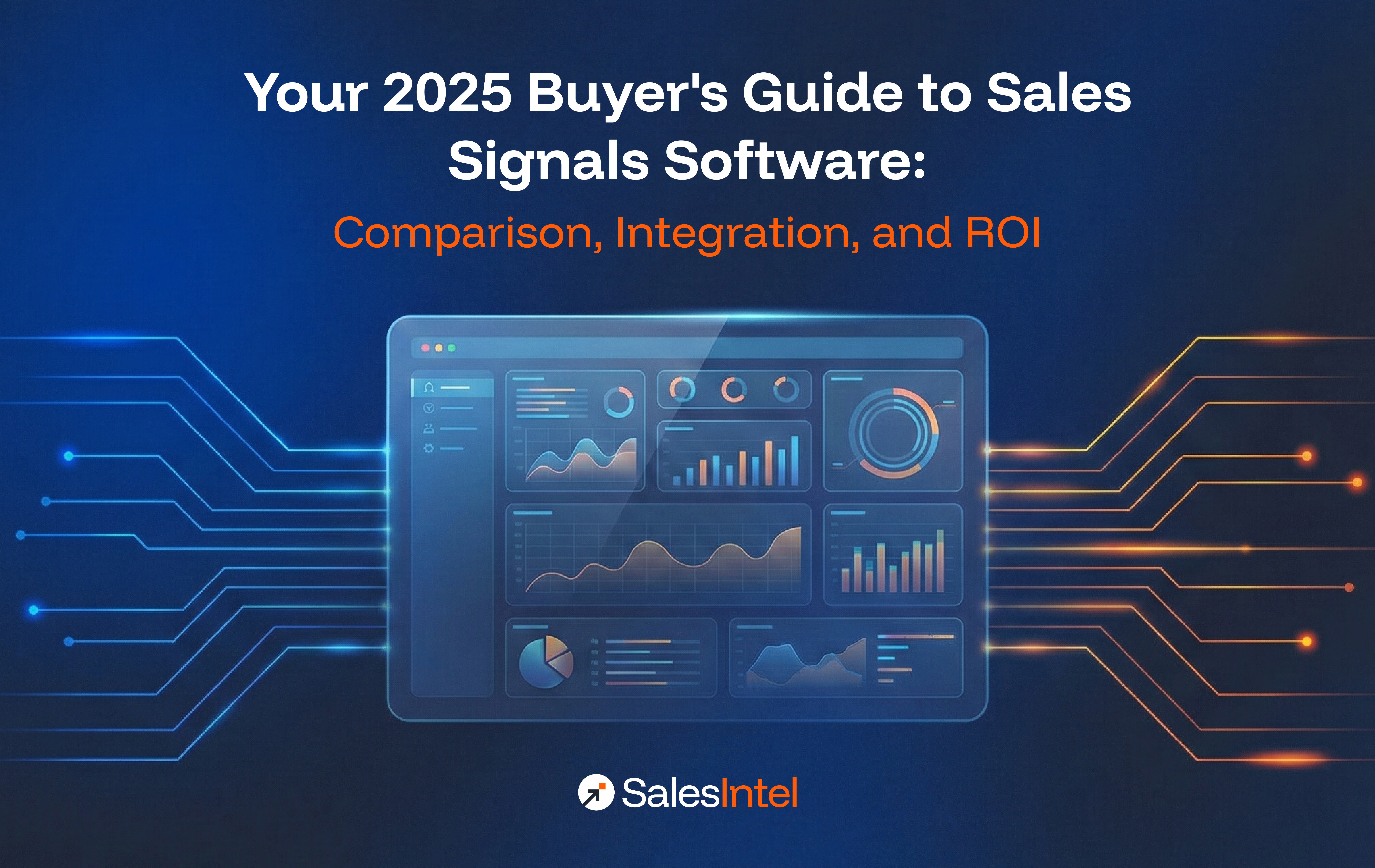In the dynamic landscape of modern business, staying ahead of the competition requires innovative approaches to sales. One such game-changer is social selling, a strategic method that leverages social media platforms to connect with potential customers.
In this article, we will explore the concept of social selling, its evolution from traditional sales models, and the manifold benefits it brings to businesses. Moreover, we’ll delve into the primary advantages of incorporating social selling into your sales strategy and provide you with a comprehensive guide on the ten essential steps to ensure social selling success.
Social selling is more than just a buzzword; it’s a paradigm shift in the way businesses approach the sales process.
Unlike traditional sales methods that often rely on cold calls and impersonal outreach, social selling is about building meaningful relationships through social media platforms. It involves leveraging online networks, engaging with prospects, and offering valuable content to nurture leads. Essentially, social selling transforms the sales process from a transactional exchange to a relational journey, where authenticity and trust take center stage.
In the realm of social selling, your online presence becomes a powerful asset. Your social media profiles are not just digital placeholders but dynamic tools that can significantly impact your sales success and by optimizing your profiles with a professional photo, a compelling bio, and relevant links, you create an immediate impression of trustworthiness.
What’s more, consistent branding across platforms reinforces your credibility and makes it easier for prospects to recognize and connect with you. Perhaps even more importantly, when you publish engaging content on your profiles, you showcase your expertise and thought leadership, attracting potential customers and initiating the first steps in building meaningful relationships.
Old Sales Model Vs New Sales Model
To understand the impact of social selling, it’s crucial to contrast it with the old sales model.
Traditional sales relied heavily on outbound sales techniques, where salespeople initiated contact with potential clients through cold calls and emails. This approach often led to a lack of personalization and an uphill battle to build trust.
The New Model
In contrast, the new sales model, driven by social selling, emphasizes inbound sales strategies. By participating in online conversations, sharing industry insights, and fostering genuine connections, sales professionals can establish themselves as trusted advisors rather than mere product pushers.
The shift from the old sales model to the new is not just about changing tactics; it’s a fundamental change in mindset. In traditional sales, the focus was on reaching as many potential customers as possible, often resulting in generic messaging that lacked personalization. Social selling, on the other hand, is about quality over quantity.
It’s about building relationships with a targeted audience, understanding their unique needs, and providing tailored solutions. This shift from a numbers game to a relationship-building approach is at the core of the new sales model, and it’s what sets social selling apart as a more effective and sustainable strategy.
Social selling’s growth potential extends beyond expanding your online presence. It exponentially increases reach, providing access to a vast pool of potential customers. Active participation in social communities positions your brand as an industry thought leader, garnering trust and credibility.
Not only that, but social media platforms offer valuable analytics, enabling you to understand customer behavior, refine your sales strategy, and adapt to evolving market trends.
The scalability of social selling is a pivotal factor in its ability to foster business growth. Traditional sales methods often face limitations in terms of outreach, constrained by geographical boundaries and manual processes. In contrast, social selling allows you to engage with a global audience, breaking down geographical barriers and opening new avenues for customer acquisition.
The viral nature of social media amplifies your message, creating a ripple effect that extends your brand’s reach far beyond what traditional methods could achieve. This global reach not only broadens your potential customer base but also positions your business as a player on the international stage.
The benefits of social selling are manifold. Firstly, it fosters authentic connections, allowing you to engage with prospects on a personal level. This personalization leads to increased trust, a crucial factor in the decision-making process.
Additionally, social selling enables you to gather real-time market insights, helping you tailor your approach to meet the specific needs of your target audience and accelerating the sales cycle by building relationships early in the buyer’s journey, resulting in a smoother transition from prospect to customer.
Brand Reputation Management Advantages
Another significant benefit of social selling is its impact on brand reputation. In the age of information overload, customers are increasingly discerning about the brands they engage with. Social selling allows you to shape a positive brand image by consistently delivering value through your online interactions.
Positive customer experiences shared on social media serve as powerful testimonials, influencing the purchasing decisions of potential customers. As you build a reputation for reliability and customer-centricity, your brand becomes not just a provider of products or services but a trusted partner in your customers’ success.
Now let’s look at 10 tangible ways that you can actually integrate social selling best practices into your existing and future sales strategies.
To kickstart your social selling journey, begin by optimizing your social media profiles. Ensure that your bio is complete, highlighting your expertise and linking to relevant resources. Use a professional photo to establish a human connection with your audience.
Consistent branding across platforms reinforces your credibility and makes it easier for prospects to recognize and connect with you. Your profile should not only reflect your professional background but also convey your personality, fostering a sense of authenticity that resonates with potential customers.
When optimizing your profiles, think about the keywords your target audience might use when searching for products or services in your industry and incorporate these keywords into your bio and posts to enhance the discoverability of your profile. By presenting a well-rounded and engaging profile, you set the stage for meaningful connections and establish a solid foundation for your social selling efforts.
2. Identify and Connect with Your Target Audience
A fundamental aspect of social selling is identifying and connecting with your target audience. Leverage advanced search features on platforms like LinkedIn to find professionals in your industry.
This is why it’s important to tailor your connection requests with personalized messages that highlight common interests or mutual connections. Remember, the goal is to initiate a conversation, not immediately pitch your product or service. Building a network with intentionality is crucial – focus on quality connections over quantity.
Once you have connected with someone, regularly engage with your network by liking and commenting on their posts. This not only increases your visibility but also strengthens the relationships you’ve initiated. By actively participating in your target audience’s online conversations, you position yourself as a valuable contributor to the community, further establishing trust and rapport.
In the realm of social selling, content is king. Regularly share relevant and valuable content that resonates with your target audience. This could include industry insights, blog posts, infographics, or videos. By positioning yourself as a valuable resource, you’ll attract and retain the attention of potential customers, building a reputation as an authority in your field.
To maximize the impact of your content, consider creating a content calendar that aligns with your target audience’s interests and pain points.
Share a mix of original content and curated material from reputable sources, showcasing your expertise while staying attuned to industry trends. Consistent content sharing not only positions you as a thought leader but also keeps you top of mind when your audience is ready to make purchasing decisions.
4. Engage in Conversations and Build Relationships
Social selling is not a one-way street; it’s about engaging in meaningful conversations and building relationships.
When engaging people on your social networks, it’s important to remember to:
- Respond promptly to comments on your posts.
- Participate in group discussions.
- Initiate conversations with your connections
The more genuine and authentic your interactions, the stronger the relationships you’ll build, laying the groundwork for future business opportunities.
In addition to responding to comments, actively seek out opportunities to engage with your audience. Pose thought-provoking questions, share anecdotes, or seek their opinions on relevant industry topics.
By fostering a sense of community within your network, you create a supportive environment where trust can flourish. Building relationships through genuine online interactions sets the stage for productive offline engagements and lays the foundation for long-term partnerships.
Social listening involves monitoring online conversations about your industry, brand, or competitors. By staying attuned to these discussions, you gain valuable insights into customer needs, pain points, and emerging trends. This knowledge equips you to tailor your social selling approach, addressing specific concerns and positioning your offering as a solution.
To effectively leverage social listening, utilize tools and features available on social media platforms. Set up keyword alerts using Google Alerts to receive notifications about relevant conversations, and actively monitor hashtags related to your industry.
Analyze the sentiment of discussions to gauge customer satisfaction and identify areas for improvement. By integrating social listening into your social selling strategy, you demonstrate responsiveness to customer feedback, enhancing your brand’s reputation and customer relationships.
Embrace the power of technology by leveraging social selling tools. Platforms like Hootsuite, Buffer, and LinkedIn Sales Navigator offer features that streamline your social selling efforts. Schedule posts, track engagement metrics, and identify potential leads more efficiently. These tools empower you to manage your social presence effectively, maximizing the impact of your social selling strategy.
When selecting social selling tools, consider your specific objectives and the platforms most relevant to your target audience. Some tools specialize in content scheduling and analytics, while others focus on lead generation and relationship management.
The most important thing to remember–both from a utility and a cost perspective–is to choose a combination of tools that align with your goals, and regularly assess their performance to ensure they continue to meet your evolving needs. The right tools not only enhance your efficiency but also provide valuable insights for refining your social selling strategy.
In the digital age, social proof plays a pivotal role in decision-making.
This is why it is so critical for you to showcase your expertise and the value of your products or services through client testimonials, case studies, and success stories. When potential customers see real-world examples of your positive impact, they are more likely to trust your offerings and consider them as viable solutions to their challenges.
Incorporate social proof strategically across your social media platforms, website, and other marketing materials. Do things like:
- Feature testimonials from satisfied customers, highlighting specific outcomes and benefits they’ve experienced.
- Consider creating multimedia content, such as video testimonials or case study presentations, to add a personal touch and enhance credibility.
- Additionally, incorporating AI presentations can add a personal touch and enhance credibility.
The bottom line is that when you transparently share the positive experiences of others, you build confidence in your brand and instill trust in prospective customers.
8. Implement Employee Advocacy Programs
Your team members can be powerful advocates for your brand on social media. Implementing employee advocacy programs encourages your employees to share company updates, industry insights, and relevant content with their networks. This amplifies your brand’s reach, leveraging the collective social influence of your team to establish a stronger online presence.
To implement a successful employee advocacy program:
1). Provide clear guidelines and training to ensure that employees represent the brand consistently.
2). Encourage team members to share their unique perspectives and experiences, humanizing the brand and fostering authenticity.
3). Recognize and celebrate employee contributions to the advocacy program, creating a positive and collaborative culture.
When you tap into the collective social networks of your team, you expand your reach organically and enhance the credibility of your brand through authentic storytelling.
9. Monitor and Measure Key Metrics
To ensure the success of your social selling efforts, it’s essential to monitor and measure key metrics. Track engagement, conversion rates, and the growth of your online network. Analyze which strategies are yielding the best results and adjust your approach accordingly.
This data-driven approach allows you to refine your social selling strategy continually, optimizing for maximum impact.
Identify key performance indicators (KPIs) aligned with your social selling objectives. These may include metrics such as likes, shares, comments, click-through rates, and lead conversions. Just be sure to use quality analytics tools provided by social media platforms and third-party applications to gather quantitative data.
It is also vital that you regularly review performance reports and compare results across different campaigns and time periods to identify trends and areas for improvement. By consistently measuring your social selling efforts, you gain valuable insights into what resonates with your audience and can adapt your strategy for continuous improvement.
10. Continuous Learning and Adaptation
Social media landscapes are dynamic, with trends and algorithms constantly evolving. That sounds cliche but you would be surprised how many people ignore it.
To stay ahead in social selling, commit to continuous learning and adaptation. Stay informed about platform updates, emerging technologies, and changes in your industry. By remaining agile and proactive, you’ll position yourself as a forward-thinking professional, capable of navigating the ever-changing digital landscape.
Some of the best ways to do this include:
- Engage in ongoing education through industry webinars, conferences, and relevant online courses to stay abreast of the latest social selling strategies and best practices.
- Join groups and forums within your industry allows you to exchange insights with peers, fostering a community of continuous learning.
- Actively seek feedback from your audience and adapt your approach based on their preferences and evolving market trends.
- Incorporate a mindset of experimentation into your social selling strategy.
- Test different content formats, posting schedules, and engagement tactics to identify what resonates most with your audience.
- Embrace a data-driven approach, regularly analyzing the performance metrics of your social selling activities.
- Use A/B testing to compare the effectiveness of different approaches, allowing you to refine your strategy based on evidence rather than assumptions.
By continuously learning and adapting, you position yourself as a dynamic and responsive social seller. This agility not only ensures your strategies remain effective in a changing landscape but also demonstrates to your audience that you are committed to providing value and staying at the forefront of your industry.
Wrapping up
In conclusion, social selling is not just a trend; it’s a fundamental shift in the way businesses connect with their audience.
By integrating these ten steps into your sales strategy, you’ll not only accelerate revenue but also forge lasting relationships with your customers in the digital era.
Embrace the power of social selling, and propel your business into a future where authenticity, engagement, and trust are the cornerstones of success but remember, success in social selling is an ongoing journey of building relationships, adapting to change, and consistently delivering value in the ever-evolving landscape of social media.




